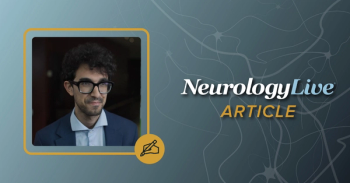In a qualitative interview study, responses revealed that fatigue and feeling sleepy were separate and distinct symptoms in patients with obstructive sleep apnea (OSA), regardless of whether they were on positive airway pressure (PAP) or not. Overall, the data highlight the need for these symptoms to be further assessed in trials and in medical practice.1
In non-PAP users (n = 20; mean age, 55; men, 50%), the most common symptoms reported included fatigue (100%), difficulty concentrating (85%), feeling sleepy (75%), dry mouth (60%), interrupted sleep (50%), and headache (50%). In this group, fatigue (63%) was rated as most bothersome while only 5% rated feeling sleepy as most bothersome. Similarly, in PAP users (n = 10; mean age, 52; men, 80%), the most common symptoms included fatigue (100%), feeling sleepy (90%), difficulty concentrating (60%), dry mouth/throat (60%), headache (50%), and interrupted sleep (50%). Once again, fatigue (63%) was reported as the most bothersome and only 25% of patients in this group rated feeling sleepy as most bothersome.
These results were presented at the 2024 SLEEP Annual Meeting, held June 1 to 5, in Houston, Texas, by lead author Helene Emsellem, MD, a clinical professor of neurology at George Washington University. In the study, patients with OSA from 3 sites in the United States completed a qualitative interview that contained concept elicitation and cognitive debriefing questions.
Experiences of the patients, captured in the interviews, were assessed through 5 patient-reported outcome (PRO) measures. These included PROMIS-Fatigue-8a, the PROMIS-Sleep Impairment-8a, the Epworth Sleepiness Scale, Patient Global Impression of Severity-Fatigue, and Patient Global Impression of Change-Fatigue. Interviews were recorded, transcribed, and analyzed using qualitative software. The symptoms and impacts were mapped to the PROs, followed by a gap analysis.
READ MORE: SynAIRgy Phase 3 Trial Aims to Assess Pharmacological Activation of Upper Airway Muscles to Treat Obstructive Sleep Apnea
Top Clinical Takeaways
- Fatigue and sleepiness are distinct and prevalent symptoms in patients with obstructive sleep apnea (OSA), affecting various aspects of daily life.
- Both non-PAP and PAP users report significant negative impacts on their physical, social, emotional functioning, and work productivity because of OSA symptoms.
- Initiating PAP therapy leads to substantial improvements in daily activities and overall functioning for patients with OSA.
Both non-PAP and PAP users (n = 30) reported negative impacts on daily activities (both, 50%), physical (60% and 50%, respectively), social (both, 50%), and emotional functioning (80% and 60%, respectively), and relationships (75% and 70%, respectively) because of OSA. Authors noted that patients commonly reported that their condition impacted their ability to work for pay and work productivity (45% and 70%, respectively). Notably, PAP users experienced improvements in their ability to do daily activities (80%) and all areas of functioning following the start of treatment with PAP (range, 80-100%).
In a survey study published in the Journal of Clinical Sleep Medicine, responses showed that good adherence to PAP treatment significantly improves fatigue, tiredness, and lack of energy, like sleepiness, among patients with OSA.2 Thus, these results suggest that patients who prefer a range of commonly related terms other than sleepiness to describe their problem may benefit from assessment and treatment for any underlying sleep-disordered breathing.
In this prior study, investigators performed a prospective survey on adults referred to a University-based sleep disorder center who had a confirmed diagnosis of OSA on polysomnography. Surveys were mailed to 1539 patients 6 months to 3 years after being prescribed PAP for home use. The participants (n = 313) included 183 who reported using PAP at least 5 hours each night, 96 were considered inadequately treated because they had no active treatment or used PAP less than 5 hours each night, and 34 were treated by surgery or other means and were therefore excluded from the subsequent analysis.
At follow-up in comparison to baseline, the patients adherent to PAP reported less fatigue, tiredness, lack of energy, and sleepiness (for each, P <.05). Authors reported improvement of each symptom, except for lack of energy, as significantly better (P <.05) among the PAP-adherent patients compared with the participants who were inadequately treated
Click here for more coverage of SLEEP 2024.
REFERENCES
1. Emsellem H, Colwell H, Cronin J, Farkas R, Mathias S. The Impact of Fatigue and Sleepiness on Patients With OSA: A Closer Look With Patient Reported Outcome Measures. Presented at: 2024 SLEEP Annual Meeting; June 1-5; Houston, Texas. Abstract 0464.
2. Chotinaiwattarakul W, O'Brien LM, Fan L, Chervin RD. Fatigue, tiredness, and lack of energy improve with treatment for OSA. J Clin Sleep Med. 2009;5(3):222-227.




























